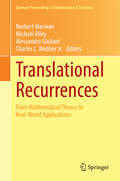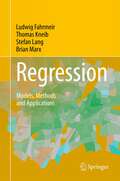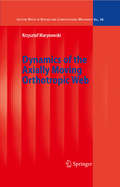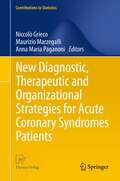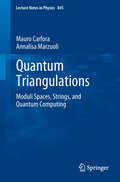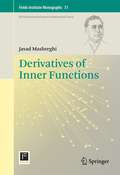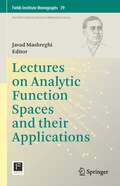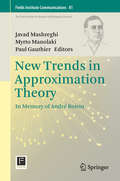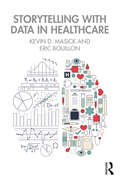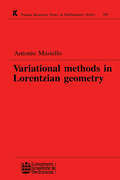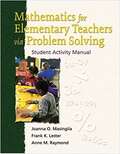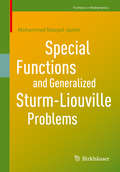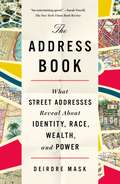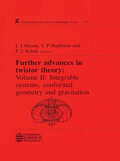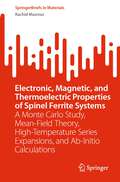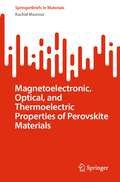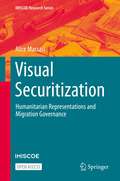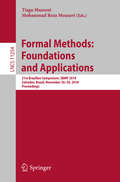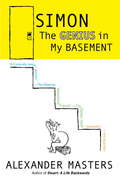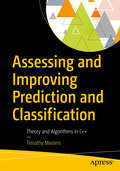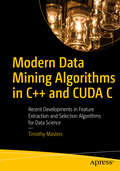- Table View
- List View
Translational Recurrences
by Norbert Marwan Michael Riley Alessandro Giuliani Charles L. WebberThis book features 13 papers presented at the Fifth International Symposium on Recurrence Plots, held August 2013 in Chicago, IL. It examines recent applications and developments in recurrence plots and recurrence quantification analysis (RQA) with special emphasis on biological and cognitive systems and the analysis of coupled systems using cross-recurrence methods. Readers will discover new applications and insights into a range of systems provided by recurrence plot analysis and new theoretical and mathematical developments in recurrence plots. Recurrence plot based analysis is a powerful tool that operates on real-world complex systems that are nonlinear, non-stationary, noisy, of any statistical distribution, free of any particular model type and not particularly long. Quantitative analyses promote the detection of system state changes, synchronized dynamical regimes or classification of system states. The book will be of interest to an interdisciplinary audience of recurrence plot users and researchers interested in time series analysis of complex systems in general.
Regression: Models, Methods and Applications
by Brian Marx Ludwig Fahrmeir Stefan Lang Thomas KneibThe aim of this book is an applied and unified introduction into parametric, non- and semiparametric regression that closes the gap between theory and application. The most important models and methods in regression are presented on a solid formal basis, and their appropriate application is shown through many real data examples and case studies. Availability of (user-friendly) software has been a major criterion for the methods selected and presented. Thus, the book primarily targets an audience that includes students, teachers and practitioners in social, economic, and life sciences, as well as students and teachers in statistics programs, and mathematicians and computer scientists with interests in statistical modeling and data analysis. It is written on an intermediate mathematical level and assumes only knowledge of basic probability, calculus, and statistics. The most important definitions and statements are concisely summarized in boxes. Two appendices describe required matrix algebra, as well as elements of probability calculus and statistical inference.
Dynamics of the Axially Moving Orthotropic Web
by Krzysztof MarynowskiA material continuum moving axially at high speed can be met in numerous different technical applications. These comprise band saws, web papers during manufacturing, processing and printing processes, textile bands during manufacturing and processing, pipes transporting fluids, transmission belts as well as flat objects moving at high speeds in space. In all these so varied technical applications, the maximum transport speed or the transportation speed is aimed at in order to increase efficiency and optimize investment and performance costs of sometimes very expensive and complex machines and installations. The dynamic behavior of axially moving systems very often hinders from reaching these aims. The book is devoted to dynamics of axially moving material objects of low flexural stiffness that are referred to as webs. Webs are moving at high speed, for example, in paper production the paper webs are transported with longitudinal speeds of up to 3000 m/min. Above the critical speed one can expect various dynamical instabilities mainly of divergent and flutter type. The up-to-date state of investigations conducted in the field of the axially moving system dynamics is presented in the beginning of the book. Special attention is paid on nonlinear dynamic investigations of translating systems. In the next chapters various mathematical models that can be employed in dynamic investigations of such objects and the results of analysis of the dynamic behavior of the axially moving orthotropic material web are presented. To make tracing the dynamic considerations easier, a paper web is the main object of investigations in the book.
New Diagnostic, Therapeutic and Organizational Strategies for Acute Coronary Syndromes Patients
by Maurizio Marzegalli Niccolò Grieco Anna Maria PaganoniThis book collects several contributions, written both by statisticians and medical doctors, which focus on the identification of new diagnostic, therapeutic and organizational strategies in order to improve the occurrence of clinical outcomes for Acute Coronary Syndromes (ACS) patients. The work is structured in two different parts: the first one is focused on cooperative project mainly on statistical analysis of large clinical and administrative databases; the second one faces the development of innovative diagnostic techniques, with specific reference to genetic and proteomic, and the evolution of new imaging techniques for the early identification of patients at major risk of thrombotic, arrhythmic complications and at risk of poor revascularization.
Digitalization and Innovation in Health: European and US Perspectives
by Weresa Anna Marzenna Christina Ciecierski Lidia FilusProviding a comparison between context in Europe and the US, this volume investigates the digital transformation of health systems, comparing strategies for digital development while identifying both key innovations and future challenges.The book covers a wide spectrum of topics, from explaining the nature of individual innovations to an analysis of demand-side and supply-side barriers, including funding issues and technological access. It also explores where digitalization is already playing an important role, for example, in clinical trials and disease modeling.Concluding with guidance for policy recommendations, this important book will interest students, scholars, and practitioners across health and social care, medicine, and beyond.
Quantum Triangulations
by Annalisa Marzuoli Mauro CarforaResearch on polyhedral manifolds often points to unexpected connections between very distinct aspects of Mathematics and Physics. In particular triangulated manifolds play quite a distinguished role in such settings as Riemann moduli space theory, strings and quantum gravity, topological quantum field theory, condensed matter physics, and critical phenomena. Not only do they provide a natural discrete analogue to the smooth manifolds on which physical theories are typically formulated, but their appearance is rather often a consequence of an underlying structure which naturally calls into play non-trivial aspects of representation theory, of complex analysis and topology in a way which makes manifest the basic geometric structures of the physical interactions involved. Yet, in most of the existing literature, triangulated manifolds are still merely viewed as a convenient discretization of a given physical theory to make it more amenable for numerical treatment. The motivation for these lectures notes is thus to provide an approachable introduction to this topic, emphasizing the conceptual aspects, and probing, through a set of cases studies, the connection between triangulated manifolds and quantum physics to the deepest. This volume addresses applied mathematicians and theoretical physicists working in the field of quantum geometry and its applications.
Game Theory
by Michael Maschler Eilon Solan Shmuel ZamirCovering both noncooperative and cooperative games, this comprehensive introduction to game theory also includes some advanced chapters on auctions, games with incomplete information, games with vector payoffs, stable matchings and the bargaining set. Mathematically oriented, the book presents every theorem alongside a proof. The material is presented clearly and every concept is illustrated with concrete examples from a broad range of disciplines. With numerous exercises the book is a thorough and extensive guide to game theory from undergraduate through graduate courses in economics, mathematics, computer science, engineering and life sciences to being an authoritative reference for researchers.
Derivatives of Inner Functions
by Javad MashreghiInner functions form an important subclass of bounded analytic functions. Since they have unimodular boundary values, they appear in many extremal problems of complex analysis. They have been extensively studied since early last century, and the literature on this topic is vast. Therefore, this book is devoted to a concise study of derivatives of these objects, and confined to treating the integral means of derivatives and presenting a comprehensive list of results on Hardy and Bergman means. The goal is to provide rapid access to the frontiers of research in this field. This monograph will allow researchers to get acquainted with essentials on inner functions, and it is self-contained, which makes it accessible to graduate students.
Lectures on Analytic Function Spaces and their Applications (Fields Institute Monographs #39)
by Javad MashreghiThe focus program on Analytic Function Spaces and their Applications took place at Fields Institute from July 1st to December 31st, 2021. Hilbert spaces of analytic functions form one of the pillars of complex analysis. These spaces have a rich structure and for more than a century have been studied by many prominent mathematicians. They have essential applications in other fields of mathematics and engineering. The most important Hilbert space of analytic functions is the Hardy class H2. However, its close cousins—the Bergman space A2, the Dirichlet space D, the model subspaces Kt, and the de Branges-Rovnyak spaces H(b)—have also garnered attention in recent decades. Leading experts on function spaces gathered and discussed new achievements and future venues of research on analytic function spaces, their operators, and their applications in other domains.With over 250 hours of lectures by prominent mathematicians, the program spanned a wide variety of topics. More explicitly, there were courses and workshops on Interpolation and Sampling, Riesz Bases, Frames and Signal Processing, Bounded Mean Oscillation, de Branges-Rovnyak Spaces, Blaschke Products and Inner Functions, and Convergence of Scattering Data and Non-linear Fourier Transform, among others. At the end of each week, there was a high-profile colloquium talk on the current topic. The program also contained two advanced courses on Schramm Loewner Evolution and Lattice Models and Reproducing Kernel Hilbert Space of Analytic Functions.This volume features the courses given on Hardy Spaces, Dirichlet Spaces, Bergman Spaces, Model Spaces, Operators on Function Spaces, Truncated Toeplitz Operators, Semigroups of weighted composition operators on spaces of holomorphic functions, the Corona Problem, Non-commutative Function Theory, and Drury-Arveson Space. This volume is a valuable resource for researchers interested in analytic function spaces.
New Trends in Approximation Theory: In Memory Of André Boivin (Fields Institute Communications Ser. #81)
by Javad Mashreghi Myrto Manolaki Paul GauthierThe international conference entitled "New Trends in Approximation Theory" was held at the Fields Institute, in Toronto, from July 25 until July 29, 2016. The conference was fondly dedicated to the memory of our unique friend and colleague, André Boivin, who gave tireless service in Canada until his very last moment of his life in October 2014. The impact of his warm personality and his fine work on Complex Approximation Theory was reflected by the mathematical excellence and the wide research range of the 37 participants. In total there were 27 talks, delivered by well-established mathematicians and young researchers. In particular, 19 invited lectures were delivered by leading experts of the field, from 8 different countries. The wide variety of presentations composed a mosaic of aspects of approximation theory, highlighting interesting connections with important contemporary areas of Analysis. Primary topics discussed include application of approximation theory (isoperimetric inequalities, construction of entire order-isomorphisms, dynamical sampling); approximation by harmonic and holomorphic functions (especially uniform and tangential approximation), polynomial and rational approximation; zeros of approximants and zero-free approximation; tools used in approximation theory; approximation on complex manifolds, in product domains, and in function spaces; and boundary behaviour and universality properties of Taylor and Dirichlet series.
Storytelling with Data in Healthcare
by Kevin Masick Eric BouillonWith the constant evolution of change in healthcare from both a technology and governmental perspective, it is imperative to take a step back and view the big picture. Relying on hunches or beliefs is no longer sustainable, so avoid jumping to conclusions and making decisions without thoroughly understanding the statistics being analyzed. The triple aim of statistics is a conceptual model laying the foundation for improving healthcare outcomes through statistics. This foundation is: know your numbers; develop behavioral interventions; and set goals to drive change.With the availability of electronic data sources, the quantity and quality of data have grown exponentially to the point of information overload. Translating all this data into words that tell a meaningful story is overwhelming. This book takes the reader on a journey that navigates through this data to tell a story that everyone can understand and use to drive improvement. Readers will learn to tell a narrative story based on data, to develop creative, innovative and effective solutions to improve processes and outcomes utilizing the authors’ tools. Topics include mortality and readmission, patient experience, patient safety survey, governmental initiatives, CMS Star Rating and Hospital Compare.Storytelling with Data in Healthcare combines methodology and statistics in the same course material, making it coherent and easier to put into practice. It uses storytelling as a tool for knowledge acquisition and retention and will be valuable for courses in nursing schools, medical schools, pharmacy schools or any healthcare profession that has a research design or statistics course offered to students. The book will be of interest to researchers, academics, healthcare professionals, and students in the fields of healthcare management and operations as well as statistics and data visualization.
Variational Methods in Lorentzian Geometry (Chapman And Hall/crc Research Notes In Mathematics Ser. #309)
by Antonio MasielloAppliies variational methods and critical point theory on infinite dimenstional manifolds to some problems in Lorentzian geometry which have a variational nature, such as existence and multiplicity results on geodesics and relations between such geodesics and the topology of the manifold.
Mathematics For Elementary Teachers Via Problem Solving: Student Activity Manual
by Joanna O. Masingila Frank K. Lester Anne Miller RaymondThis combination activity manual and resource handbook provides a two-part learning system for prospective K-6 teachers. It uses activities to help develop a deep and lasting understanding of the mathematical concepts, procedures, and skills that are essential for teaching mathematics to elementary school children. Chapter topics include getting started in learning mathematics via problem solving; numeration; operations on natural numbers, whole numbers and integers; number theory; data and chance; fraction models and operations; real numbers: rationals and irrationals; patterns and functions; geometry; and measurement. For teachers of mathematics at the elementary school level.
Special Functions and Generalized Sturm-Liouville Problems (Frontiers in Mathematics)
by Mohammad Masjed-JameiThis book discusses theoretical and applied aspects of Sturm-Liouville theory and its generalization. It introduces and classifies generalized Sturm-Liouville problems in three different spaces: continuous, discrete, and q-discrete spaces, focusing on special functions that are solutions of a regular or singular Sturm-Liouville problem. Further, it describes the conditions under which the usual Sturm-Liouville problems with symmetric solutions can be extended to a larger class, particularly highlighting the solutions of generalized problems that result in new orthogonal sequences of continuous or discrete functions.Sturm-Liouville theory is central to problems in many areas, such as engineering, mathematics, physics, and biology. This accessibly written book on the topic is a valuable resource for a broad interdisciplinary readership, from novices to experts.
The Address Book: What Street Addresses Reveal About Identity, Race, Wealth, and Power
by Deirdre MaskAn extraordinary debut in the tradition of classic works from authors such as Mark Kurlansky, Mary Roach, and Rose George.An exuberant and insightful work of popular history of how streets got their names, houses their numbers, and what it reveals about class, race, power, and identity.When most people think about street addresses, if they think of them at all, it is in their capacity to ensure that the postman can deliver mail or a traveler won’t get lost. But street addresses were not invented to help you find your way; they were created to find you. In many parts of the world, your address can reveal your race and class. In this wide-ranging and remarkable book, Deirdre Mask looks at the fate of streets named after Martin Luther King Jr., the wayfinding means of ancient Romans, and how Nazis haunt the streets of modern Germany. The flipside of having an address is not having one, and we also see what that means for millions of people today, including those who live in the slums of Kolkata and on the streets of London. Filled with fascinating people and histories, The Address Book illuminates the complex and sometimes hidden stories behind street names and their power to name, to hide, to decide who counts, who doesn’t—and why.
Further Advances in Twistor Theory: Volume II: Integrable Systems, Conformal Geometry and Gravitation (Chapman And Hall/crc Research Notes In Mathematics Ser. #232)
by L.J. Mason L.P. Hughston P.Z. KobakTwistor theory is the remarkable mathematical framework that was discovered by Roger Penrose in the course of research into gravitation and quantum theory. It have since developed into a broad, many-faceted programme that attempts to resolve basic problems in physics by encoding the structure of physical fields and indeed space-time itself into the complex analytic geometry of twistor space. Twistor theory has important applications in diverse areas of mathematics and mathematical physics. These include powerful techniques for the solution of nonlinear equations, in particular the self-duality equations both for the Yang-Mills and the Einstein equations, new approaches to the representation theory of Lie groups, and the quasi-local definition of mass in general relativity, to name but a few. This volume and its companions comprise an abundance of new material, including an extensive collection of Twistor Newsletter articles written over a period of 15 years. These trace the development of the twistor programme and its applications over that period and offer an overview on the current status of various aspects of that programme. The articles have been written in an informal and easy-to-read style and have been arranged by the editors into chapter supplemented by detailed introductions, making each volume self-contained and accessible to graduate students and non-specialists from other fields. Volume II explores applications of flat twistor space to nonlinear problems. It contains articles on integrable or soluble nonlinear equations, conformal differential geometry, various aspects of general relativity, and the development of Penrose's quasi-local mass construction.
Electronic, Magnetic, and Thermoelectric Properties of Spinel Ferrite Systems: A Monte Carlo Study, Mean-Field Theory, High-Temperature Series Expansions, and Ab-Initio Calculations (SpringerBriefs in Materials)
by Rachid MasrourThis book explores magnetic properties and critical temperatures in inverse ferrite Fe₃⁺(M₂⁺Fe₃⁺)O₄ spinels (e.g., Fe, Co, Ni). It calculates transition and Curie Weiss temperatures, providing insights into their thermodynamic behavior. Using the full potential linearized augmented plane wave (FP-LAPW) method, it investigates electrical and magnetic structures of spinel chromite, revealing magnetic moments in MnCr₂S₄. Seebeck coefficient and electrical conductivity are also calculated. Advanced techniques like Monte Carlo, DFT+U, and FLAPW analyze magnetic characteristics of LiMn₁.₅Ni₀.₅O₄ and electronic/magnetic structures of Fe₃O₄. High-temperature series expansions calculate Néel temperature and critical exponents, while GFT determines thermal magnetization and susceptibility. The analysis exposes exchange interactions' effects on magnetic order and introduces asymmetric phases in ferrimagnetic spinel systems. This book serves as an invaluable resource for researchers, academics, and enthusiasts seeking a comprehensive understanding of magnetic properties and critical phenomena within diverse spinel materials.
Magnetoelectronic, Optical, and Thermoelectric Properties of Perovskite Materials (SpringerBriefs in Materials)
by Rachid MasrourThis book undertakes an extensive exploration of manganese-based compounds, such as T₁₋ₓSrxMnO₃ (T = La, Pr; x = 0.35, 0.25) using density functional theory and Monte Carlo simulations with a focus on understanding their electronic, magnetic, and magnetocaloric properties. Ba₁₋ₓSrxFeO₃ (x = 0, 0.2) is also studied via different approximations, offering a comparative perspective. In addition, the book looks at the influence of magnetism using Monte Carlo simulations, revealing crucial parameters and examining the GdCrO₃ system through DFT and Monte Carlo simulation, shedding light on recent experimental observations. Additionally, Monte Carlo studies investigate magnetic and magnetocaloric features of Sr₂FeMoO₆, La₂SrMn₂O₇ bilayer manganite, perovskite ferromagnetic thin films' surface effects, and SmFe₁₋ₓMnxO₃ perovskite. In essence, this book significantly advances our comprehension of magnetic and magnetocaloric phenomena across diverse materials and is well-suited for both experimentalists and computational researchers working in this field.
Visual Securitization: Humanitarian Representations and Migration Governance (IMISCOE Research Series)
by Alice MassariThis open access book offers an innovative account of how relief organizations’ visual depiction of Syrian displacement contributes to reproduce and reinforce a securitized account of refugees. Through visual analysis, the book demonstrates how the securitization process takes place in three different ways. First of all, even if marginally, it occurs through the reproduction of mainstream media and political accounts that have depicted refugees in terms of threats. Secondly, and more consistently, through a representation of Syrian displaced people that, despite the undeniable innovative aesthetic patterns focusing on dignity and empowerment, continue to reinforce a visual narrative around refugees in terms of victimhood and passivity. The reproduction of a securitized account takes also place through the dialectic between what is made visible in the pictures and what is not. At the same time the book identifies visual glimmers and minor displacements in the humanitarian discourse that have the potentiality to produce alternative discourses on refugees and displacement beyond the mainstream securitized ones. By showing how relief organizations’ visual representation contributes to the securitization of the refugee issue, this book provides a great resource to students and academics in migration, visuality, humanitarianism and securitization, as well as social scientists and policy-makers.
Auxiliary Polynomials in Number Theory
by David MasserThis unified account of various aspects of a powerful classical method, easy to understand in its simplest forms, is illustrated by applications in several areas of number theory. As well as including diophantine approximation and transcendence, which were mainly responsible for its invention, the author places the method in a broader context by exploring its application in other areas, such as exponential sums and counting problems in both finite fields and the field of rationals. Throughout the book, the method is explained in a 'molecular' fashion, where key ideas are introduced independently. Each application is the most elementary significant example of its kind and appears with detailed references to subsequent developments, making it accessible to advanced undergraduates as well as postgraduate students in number theory or related areas. It provides over 700 exercises both guiding and challenging, while the broad array of applications should interest professionals in fields from number theory to algebraic geometry.
Worldwide Differential Calculus
by David B. MasseyOur goal with this textbook is, of course, to help you learn Differential Calculus (the Calculus of derivatives). But why publish a new textbook for this purpose when so many already exist? There are several reasons why we believe that our textbook is a vast improvement over those already in existence.
Formal Methods: 21st Brazilian Symposium, SBMF 2018, Salvador, Brazil, November 26–30, 2018, Proceedings (Lecture Notes in Computer Science #11254)
by Tiago Massoni Mohammad Reza MousaviThis book constitutes the refereed proceedings of the 21st Brazilian Symposium on Formal Methods, SBMF 2018, which took place in Salvador, Brazil, in November 2018.The 16 regular papers presented in this book were carefully reviewed and selected from 30 submissions. The papers are organized in topical sections such as: techniques and methodologies; specification and modeling languages; theoretical foundations; verification and validation; experience reports regarding teaching formal methods; and applications.Chapter “TeSSLa: Temporal Stream-Based Specification Language” is available open access under a Creative Commons Attribution 4.0 International License via link.springer.com.
Simon
by Alexander MastersAlexander Masters tripped over his first book subject on a Cambridge sidewalk, and the result was the multi-award-winning bestseller Stuart: A Life Backwards. His second, he's found under his floorboards. One of the greatest mathematical prodigies of the twentieth century, Simon Norton stomps around Alexander's basement in semidarkness, dodging between stalagmites of bus timetables and engorged plastic bags, eating tinned kippers stirred into packets of Bombay mix. Simon is exploring a theoretical puzzle so complex and critical to our understanding of the universe that it is known as the Monster. It looks like a sudoku table--except a sudoku table has nine columns of numbers. The Monster has 808017424794512875886459904961710757005754368000000000 columns. But that's not the whole story. What's inside the decaying sports bag he never lets out of his clutches? Why does he hurtle out of the house in the middle of the night? And--good God!--what is that noxious smell that creeps up the stairwell? Grumpy, poignant, comical--more intimate than either the author or his quarry intended--Simon: The Genius in My Basement is the story of a friendship and a pursuit. Part biography, part memoir, and part popular science, it is a study of the frailty of brilliance, the measures of happiness, and Britain's most uncooperative egghead eccentric.From the Hardcover edition.
Assessing and Improving Prediction and Classification: Theory and Algorithms in C++
by Timothy MastersThis book begins by presenting methods for performing practical, real-life assessment of the performance of prediction and classification models. It then goes on to discuss techniques for improving the performance of such models by intelligent resampling of training/testing data, combining multiple models into sophisticated committees, and making use of exogenous information to dynamically choose modeling methodologies. Rigorous statistical techniques for computing confidence in predictions and decisions receive extensive treatment. Finally, a hundred pages are devoted to the use of information theory in evaluating and selecting useful predictors. Special attention is paid to Schreiber's Information Transfer, a recent generalization of Grainger Causality. Well commented C++ code is given for every algorithm and technique. The ultimate purpose of this text is three-fold. The first goal is to open the eyes of serious developers to some of the hidden pitfalls that lurk in the model development process. The second is to provide broad exposure for some of the most powerful model enhancement algorithms that have emerged from academia in the last two decades, while not bogging down readers in cryptic mathematical theory. Finally, this text should provide the reader with a toolbox of ready-to-use C++ code that can be easily incorporated into his or her existing programs.
Modern Data Mining Algorithms in C++ and CUDA C: Recent Developments in Feature Extraction and Selection Algorithms for Data Science
by Timothy MastersDiscover a variety of data-mining algorithms that are useful for selecting small sets of important features from among unwieldy masses of candidates, or extracting useful features from measured variables. As a serious data miner you will often be faced with thousands of candidate features for your prediction or classification application, with most of the features being of little or no value. You’ll know that many of these features may be useful only in combination with certain other features while being practically worthless alone or in combination with most others. Some features may have enormous predictive power, but only within a small, specialized area of the feature space. The problems that plague modern data miners are endless. This book helps you solve this problem by presenting modern feature selection techniques and the code to implement them. Some of these techniques are:Forward selection component analysis Local feature selection Linking features and a target with a hidden Markov model Improvements on traditional stepwise selection Nominal-to-ordinal conversion All algorithms are intuitively justified and supported by the relevant equations and explanatory material. The author also presents and explains complete, highly commented source code. The example code is in C++ and CUDA C but Python or other code can be substituted; the algorithm is important, not the code that's used to write it. What You Will Learn Combine principal component analysis with forward and backward stepwise selection to identify a compact subset of a large collection of variables that captures the maximum possible variation within the entire set. Identify features that may have predictive power over only a small subset of the feature domain. Such features can be profitably used by modern predictive models but may be missed by other feature selection methods. Find an underlying hidden Markov model that controls the distributions of feature variables and the target simultaneously. The memory inherent in this method is especially valuable in high-noise applications such as prediction of financial markets. Improve traditional stepwise selection in three ways: examine a collection of 'best-so-far' feature sets; test candidate features for inclusion with cross validation to automatically and effectively limit model complexity; and at each step estimate the probability that our results so far could be just the product of random good luck. We also estimate the probability that the improvement obtained by adding a new variable could have been just good luck. Take a potentially valuable nominal variable (a category or class membership) that is unsuitable for input to a prediction model, and assign to each category a sensible numeric value that can be used as a model input. Who This Book Is For Intermediate to advanced data science programmers and analysts. C++ and CUDA C experience is highly recommended. However, this book can be used as a framework using other languages such as Python.
